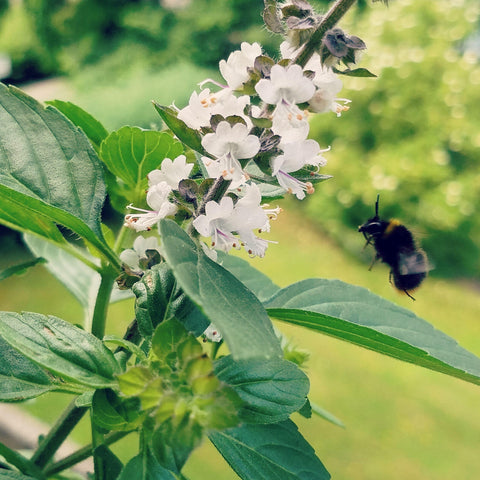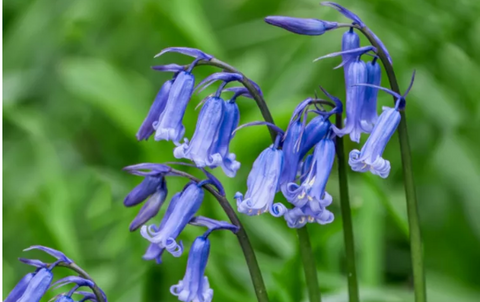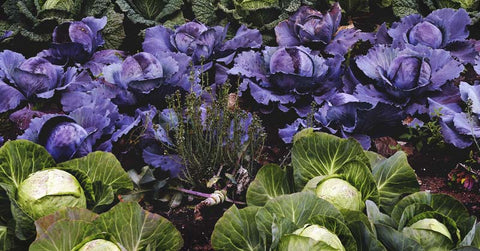As the chill of winter melts away and the promise of spring hangs in the air, gardeners eagerly anticipate the arrival of vibrant blooms and sweet fragrances. Among the treasures of the spring garden, hyacinth bulbs stand out for their intoxicating scent and striking beauty. In this comprehensive guide, we'll delve into the art of cultivating hyacinths, from understanding their bulbs to preserving their delightful fragrance.

Understanding Hyacinth Bulbs
Overview of hyacinth bulbs
Hyacinth bulbs, scientifically known as Hyacinthus orientalis, are perennial flowering plants native to the eastern Mediterranean region. These bulbs belong to the Asparagaceae family and are prized for their dense clusters of fragrant, bell-shaped flowers. With a wide range of colors, including shades of blue, pink, purple, and white, hyacinths add a splash of vibrancy to any garden.
Varieties of hyacinth bulbs
Hyacinth bulbs come in a diverse array of cultivars, each with its own unique characteristics. From the classic 'Blue Jacket' with its deep indigo blooms to the delicate 'Carnegie' with pure white flowers, there's a hyacinth variety to suit every taste and garden palette. Other popular varieties include 'Woodstock' with its rich purple hues and 'Pink Pearl' with soft pink petals.
Selecting the Right Bulbs
Choosing healthy bulbs
When selecting hyacinth bulbs for planting, opt for firm, plump bulbs free from mold or soft spots. Avoid bulbs that feel lightweight or show signs of damage. Look for bulbs with intact roots, as healthy roots are essential for successful growth and flowering.
Determining the right variety for your garden
Consider factors such as bloom color, height, and fragrance when choosing hyacinth varieties for your garden. Select bulbs that complement the overall design aesthetic and environmental conditions of your outdoor space. Whether you prefer a mass planting of one color or a diverse mix of hues, there's a hyacinth variety to suit your garden vision.
Preparing the Planting Site
Sunlight requirements for hyacinths
Hyacinths thrive in full to partial sunlight, requiring at least 6 hours of direct sunlight per day for optimal growth and flowering. Choose a planting site that receives ample sunlight, avoiding areas with excessive shade or competition from tree roots.
Soil preparation for optimal growth
Prepare the planting site by cultivating the soil to a depth of 8-10 inches and incorporating organic matter such as compost or well-rotted manure. Hyacinths prefer well-draining soil with a slightly acidic to neutral pH (around 6.0 to 7.0). Amending the soil with organic matter improves soil structure, fertility, and moisture retention, creating an ideal environment for healthy bulb development.

Planting Hyacinth Bulbs
Timing for planting hyacinth bulbs
Plant hyacinth bulbs in the fall, ideally 6-8 weeks before the first frost date in your region. This allows the bulbs to establish roots before winter sets in, ensuring robust growth and early spring blooms. In warmer climates, where winters are mild, you can plant hyacinth bulbs as late as December for spring flowering.
Proper planting depth and spacing
Dig individual planting holes for each hyacinth bulb, spacing them approximately 6 inches apart to allow for adequate air circulation and future growth. Plant bulbs at a depth of 4-6 inches, with the pointed end facing upward and the roots facing downward. Firmly press the soil around each bulb to eliminate air pockets and provide stability.
Caring for Hyacinth Bulbs
Watering needs of hyacinths
Maintain consistent soil moisture during the growing season, keeping the soil evenly moist but not waterlogged. Water newly planted bulbs thoroughly after planting to settle the soil around the roots. During periods of prolonged drought, supplement rainfall with deep watering to ensure the bulbs receive adequate hydration.
Fertilizing hyacinth bulbs
Apply a balanced fertilizer high in phosphorus (the middle number in the N-P-K ratio) to promote strong root development and abundant flowering. Incorporate fertilizer into the soil at planting time, following package instructions for application rates. Avoid excessive nitrogen, as it can encourage lush foliage growth at the expense of flower production.
Managing Pests and Diseases
Common pests affecting hyacinths
Keep an eye out for common pests such as aphids, slugs, and bulb mites, which can damage foliage and flowers. Monitor plants regularly for signs of infestation, including distorted growth, yellowing leaves, and holes in the foliage. Control pests through cultural practices such as handpicking, insecticidal soap sprays, or biological controls.
Preventative measures against diseases
Hyacinths are susceptible to fungal diseases such as gray mold (Botrytis) and bulb rot, especially in damp or poorly ventilated conditions. To prevent disease, provide adequate spacing between plants to promote air circulation and avoid overhead watering, which can promote fungal growth. Remove and dispose of any infected plant material promptly to prevent the spread of disease.

Supporting Growth with Staking
Importance of staking hyacinth flowers
Tall hyacinth varieties with heavy flower spikes may require staking to prevent them from toppling over in windy conditions or under the weight of their blooms. Staking provides support and stability, ensuring that the flowers remain upright and visible throughout the blooming period. Additionally, staked plants are less susceptible to damage from heavy rain or physical disturbance.
Methods for staking hyacinth plants
Use stakes or support structures made from bamboo, metal, or plastic to provide vertical support for hyacinth flower spikes. Insert stakes into the soil near the base of the plant, taking care not to damage the bulb or roots. Secure the flower stems to the stakes using soft ties or twine, allowing room for growth and flexibility as the plant matures.
Pruning and Deadheading
Pruning for optimal growth and aesthetics
Remove faded or spent flowers promptly to prevent seed formation and conserve the plant's energy for future growth. Use clean, sharp scissors or pruning shears to snip off the flower stalk at its base, taking care not to damage the surrounding foliage. Pruning encourages the production of new blooms and maintains a tidy appearance in the garden.
Deadheading to encourage continuous blooming
Deadhead hyacinth flowers regularly throughout the blooming season to prolong flowering and encourage repeat blooming. Pinch off individual spent flowers or entire flower spikes once the blooms have faded and begun to decline. Deadheading redirects the plant's energy into bulb development and promotes a longer-lasting display of colorful blooms.
Harvesting Hyacinth Flowers
When to harvest hyacinth blooms
Harvest hyacinth flowers when they are fully open and at their peak of freshness and fragrance. Avoid harvesting flowers in the early morning when dew may be present, as moisture can cause the blooms to deteriorate more quickly. Cut flower stems at an angle using sharp scissors or garden shears, leaving at least 6 inches of stem attached to the bulb for future growth.
Techniques for harvesting without damage
Handle harvested hyacinth blooms with care to avoid bruising or damaging the delicate petals. Place cut flowers immediately in a clean bucket or vase filled with lukewarm water to prevent wilting and dehydration. Remove any foliage that will be submerged in water to prevent bacterial growth and maintain water quality.

Preserving the Fragrance
Methods for enjoying the scent indoors
Bring the intoxicating fragrance of hyacinths indoors by displaying freshly cut blooms in vases or floral arrangements throughout your home. Position floral displays in high-traffic areas where the scent can be appreciated and enjoyed by family and guests alike. Combine hyacinth flowers with other spring blooms such as tulips, daffodils, and lilacs for a fragrant symphony of scents.
Tips for prolonging the fragrance
To prolong the fragrance of hyacinth blooms, place them in a cool, well-ventilated room away from direct sunlight and heat sources. Change the water in the vase every few days and trim the stems at an angle to promote water uptake and maintain freshness. Avoid placing hyacinth blooms near ripening fruit or strong-smelling foods, as they can absorb odors and detract from the floral scent.
Conclusion
In conclusion, growing hyacinth bulbs is a rewarding endeavor that brings beauty, fragrance, and joy to the spring garden. By understanding the needs of these charming flowers and providing proper care and attention, gardeners can enjoy a bountiful display of colorful blooms year after year. Whether planted en masse in flower beds or showcased in elegant floral arrangements, hyacinths never fail to captivate the senses and herald the arrival of spring's splendor.









